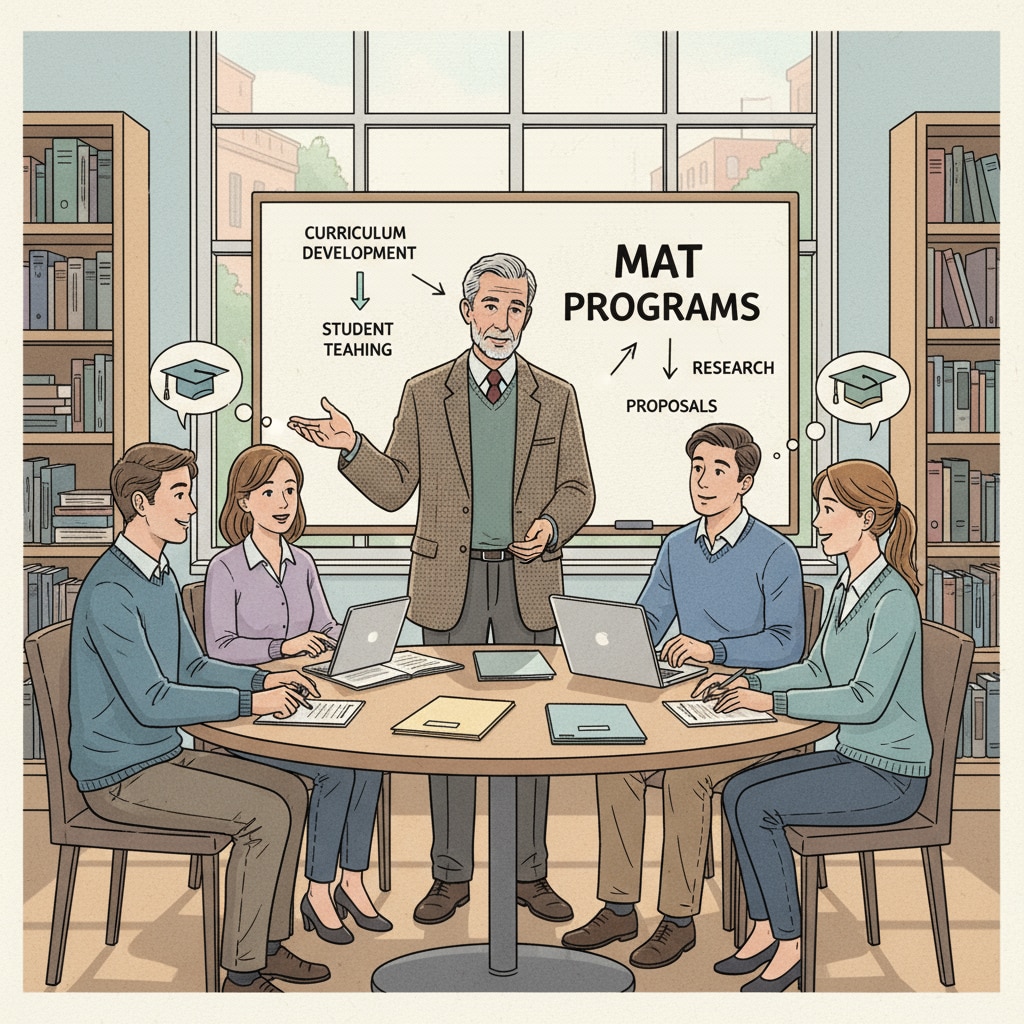When it comes to applying for a Master of Arts in Teaching (MAT) program, recommendation letters play a pivotal role for teaching assistants. These letters can significantly influence the admissions committee’s decision. In this article, we’ll explore various aspects related to finding the right recommenders and obtaining impactful recommendation letters for MAT program applications.

The Importance of Recommendation Letters in MAT Applications
Recommendation letters serve as a crucial component in MAT applications. They provide insights into a teaching assistant’s character, skills, and potential as an educator. Admissions committees rely on these letters to gauge an applicant’s suitability for the program. A strong recommendation letter can highlight a teaching assistant’s strengths, such as classroom management skills, subject matter expertise, and ability to engage students. For example, a letter that details how a teaching assistant effectively helped students overcome learning difficulties can make a positive impression. According to ETS’s guide for recommenders, clear and specific examples in recommendation letters are highly valued by admissions officers.
Potential Recommenders for Teaching Assistants
- Professors: Professors who have taught the teaching assistant in relevant courses can provide valuable insights into their academic abilities. They can speak to the applicant’s understanding of educational theories and their capacity to apply them in real-world teaching scenarios. For instance, a professor of educational psychology can comment on how the teaching assistant grasped concepts and used them to design effective lesson plans.
- School Administrators: School administrators, such as principals or vice principals, can offer a broader perspective on the teaching assistant’s contributions to the school community. They can talk about the applicant’s leadership skills, teamwork, and overall impact on the school environment. A school administrator might mention how the teaching assistant initiated a successful extracurricular activity that enhanced student engagement.
- Cooperating Teachers: Cooperating teachers, with whom the teaching assistant has worked closely in the classroom, are excellent recommenders. They can provide firsthand accounts of the teaching assistant’s teaching skills, classroom presence, and ability to interact with students. A cooperating teacher could describe how the teaching assistant managed a challenging class and improved student performance.

Advantages and Disadvantages of Different Recommenders
Each type of recommender has its own set of advantages and disadvantages. Professors are well-versed in academic matters, but they may not have extensive knowledge of the teaching assistant’s practical teaching experience. School administrators can offer a holistic view, yet they might not be as familiar with the applicant’s day-to-day teaching activities. Cooperating teachers have in-depth knowledge of the teaching assistant’s classroom performance, but their letters might lack the academic perspective. Therefore, it’s essential for teaching assistants to carefully consider which recommenders can best showcase their strengths and qualities relevant to the MAT program. As Inside Higher Ed suggests, understanding the pros and cons of different recommenders is key to making an informed decision.
Strategies for Obtaining Strong Recommendation Letters
- Build Relationships Early: Teaching assistants should start building relationships with potential recommenders early in their academic or professional careers. This can involve actively participating in class discussions, seeking mentorship, and demonstrating a genuine passion for teaching.
- Provide Necessary Information: When asking for a recommendation letter, provide the recommender with detailed information about the MAT program, your goals, and your relevant achievements. This will help them tailor the letter to the specific requirements of the program.
- Give Adequate Time: Respect the recommender’s time by giving them sufficient notice, preferably at least a few weeks in advance. This allows them to write a thoughtful and well-crafted letter.
In conclusion, for teaching assistants applying to MAT programs, securing the right recommendation letters is a critical step. By carefully considering potential recommenders, understanding their advantages and disadvantages, and implementing effective strategies for obtaining strong letters, teaching assistants can enhance their chances of standing out in the competitive admissions process. Remember, a well-written recommendation letter can be the key to unlocking your dream of pursuing a MAT program and becoming a successful educator.
Readability guidance: The article uses short paragraphs and lists to summarize key points. Each H2 section provides a list for better organization. The proportion of passive voice and long sentences is controlled, and transition words are used throughout the text to enhance flow.


